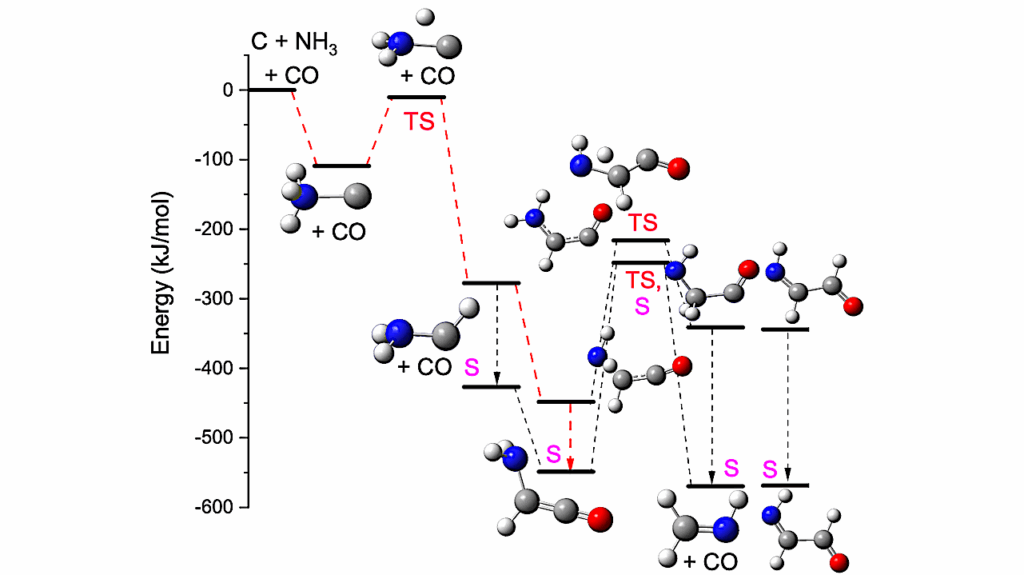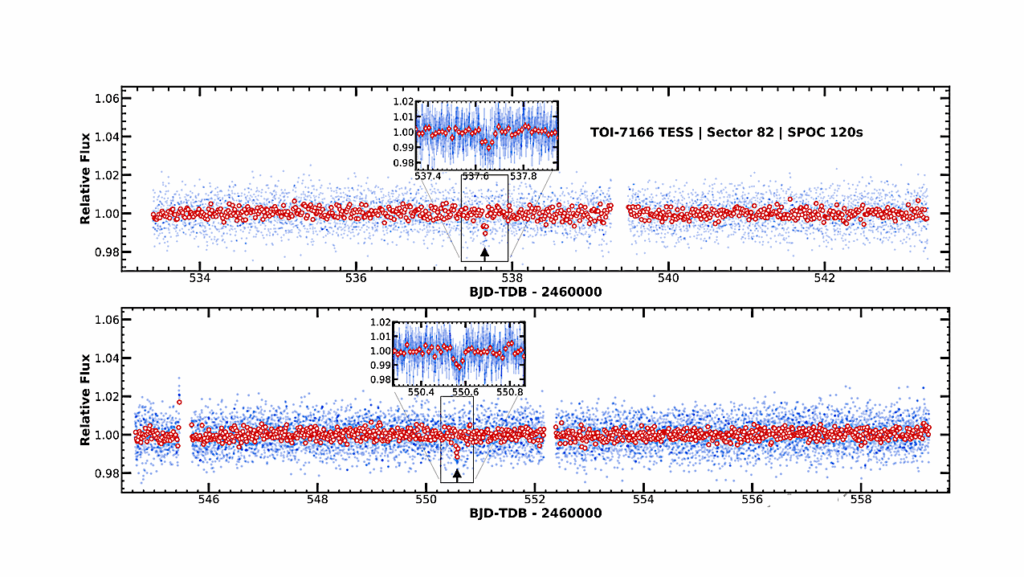Biosignature False Positives In Potentially Habitable Planets Around M Dwarfs: The Effect Of UV Radiation From One Flare

Many past studies have predicted the steady-state production and maintenance of abiotic O2 and O3 in the atmospheres of CO2-rich terrestrial planets orbiting M dwarf stars.
However, the time-dependent responses of these planetary atmospheres to flare events – and the possible temporary production or enhancement of false positive biosignatures therein – has been comparatively less well studied. Most past works that have modeled the photochemical response to flares have assumed abundant free oxygen like that of the modern or Proterozoic Earth.
Here we examine in detail the photochemical impact of the UV emitted by a single flare on abiotic O2/O3 production in prebiotic, CO2-dominated atmospheres of M dwarf planets with CO2 levels ranging from 10% to 90% of 1 bar. We find that a single flare generally destroys O2 while modestly enhancing O3 column densities. We simulate the spectral observables of both the steady-state atmosphere and time-dependent spectral response over the flare window for both emitted and transmitted light spectra.
Over the course of the flare, the O3 UV Hartley band is modestly enhanced by a maximum of 6 ppm while the CO2 molecular transit depths modestly decline by 7 ppm. In both emitted and transmitted light spectra, the 9.65 μm O3 band is hidden by the overlapping 9.4 μm CO2 band for all scenarios considered. Overall, we find that the possible enhancements of abiotic O3 due to a single flare are small compared to O3’s sensitivity to other parameters such as CO2 and H2O abundances or the availability of reducing gases such as H2.

Normalized complete (a) and UV spectra (b) for two observed active M dwarfs, a synthetic inactive M star, and for the Sun. Stellar fluxes were normalized in such a way as to produce a surface temperature similar to that on present Earth (288 K). — astro-ph.EP
Arturo Miranda-Rosete (1), Antígona Segura (1 and 2), Edward W. Schwieterman (2 and 3 and 4) ((1) Instituto de Ciencias Nucleares, UNAM, (2) Virtual Planet Laboratory, (3) University of California. Riverside, (4) Blue Marble Space Institute of Science)
Comments: Accepted for publication in ApJ. 31 pages, 14 figures
Subjects: Earth and Planetary Astrophysics (astro-ph.EP)
Cite as: arXiv:2308.01880 [astro-ph.EP] (or arXiv:2308.01880v1 [astro-ph.EP] for this version)
Submission history
From: Arturo Miranda-Rosete
[v1] Thu, 3 Aug 2023 17:15:33 UTC (1,848 KB)
https://arxiv.org/abs/2308.01880
Astrobiology








